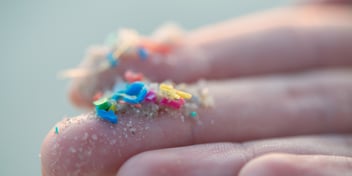Marine investigators find Australian seabeds covered in microplastics
Although microplastics in oceans and on beaches is a global concern, a recent investigation of seabed pollution around Australia has left marine biologists startled by the high concentration of synthetics in sediment.
Studies have estimated that 70% of marine litter sinks to the seafloor and enters marine sediments. Scientists from the University of Tasmania’s Institute for Marine and Antarctic Studies tested sediments at 42 locations between Adelaide and Sydney.
They were surprised to find similar concentrations across all sample areas – not just in samples close to urban centres.
"To our surprise we found high levels of microplastics across the board,” said University of Tasmania’s marine biologist Dr Scott Ling.
"On average we found about 3.4 microplastics in every millilitre of sediment we sampled."
Samples were taken to a depth of 10cm at sites including Sydney Harbour, Jervis Bay, Eden, Port Phillip Bay and Port Adelaide.
Ling said that aside from microplastics used in cosmetics and fibres in clothing, they’re also created from larger pieces of plastic litter, and from industrial discharge and fishing activity.
According to him, the next step in research will be to investigate how sediment microplastics are affecting sea life.
"In a lot of these places where there were higher plastic loads, there was plenty of marine life with a diverse range of species that could potentially ingest or get entangled in these particles," he said.
Related podcast:
https://omny.fm/shows/australianwater/wilson-xu-on-detoxing-our-waterways

